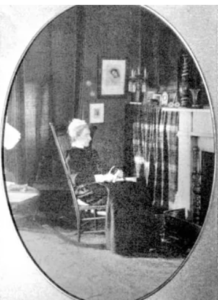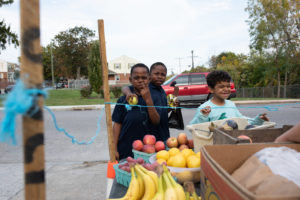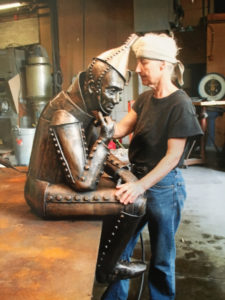When Latinos came to York County
The situation
In the World War II era, scores of Latinos – many from Puerto Rico – are recruited to work York County’s fields and orchards. County farmers, experiencing wartime labor shortages, also employed German prisoners of war based in Stewartstown and fruit pickers from Jamaica. They also followed a past practice of recruiting Polish workers from Baltimore.
Within a decade, farms are becoming so large and mechanized that farm families can’t sustain the crops and local labor is in short supply. Every summer, migrant farm workers arrived in York County from at least two places. Squads of men from Puerto Rico traveled in the summer after working in the sugar cane fields, and Florida field crews arrived in families after working in the citrus groves. In 1954, 600 workers were expected to work in York County’s fields, orchards and canneries. According to one news account: “Because the wages are tied to piecework, there is little loafing.” The Puerto Ricans are known to bring along cooks. One cannery found that the “Puerto Rican idea of good food is long from the American idea – and it has imported three cooks from the island … to keep homesickness from settling in their crews’ stomachs.”
By the end of the 1950s, agriculturally mighty York County remains a major employer of migrant workers. The average seasonal workers who come to harvest crops stood at 200 Southern migrants and 400 Puerto Ricans who stay and work from 60 camps. In 1958, the need for migrant workers was expected to be less because of high industrial unemployment, according to the Job Service office in York County. Despite this, some workers were expected for work in isolated parts of the county. And some farmers had ongoing private contracts with workers from The South. The Job Service said it will not sanction bringing in workers given the high local unemployment but ultimately it is up to the farmer.
This is summary of the early years of Latinos in York County. Today, 80 years later, about one out of 12 York County residents is Latino, according to the 2020 census.
The witness
A timeline for the Latino community in the years after these farm workers came seasonally to York County.
1958 – Jose and Gloria Hernandez moved to York County, transferring from another location of his employer, Cole Steel. Meanwhile, his contributions to the York County Latino community included hosting a local radio program. He also was employed part-time with WORK radio in York, perhaps the county’s first bilingual radio personality. He also helped attract Latino-owned Goya foods to the county and became involved in the county court system and city police department as an interpreter and translator. His leadership of the Progressive Spanish American Council in the late 1960s until his death in 1971 came at an important time as racial unrest shook the York community. Gloria Hernandez served on several Latino boards and served in support roles an array of Latino initiatives.
1959 – Latinos are counted in sufficient numbers by the late-1950s to prompt the Roman Catholic bishop in Harrisburg to appoint a priest to St. Patrick’s Church in York to minister to this growing group. The Rev. Andre Melusky came on board in 1959 and served through 1962. Meanwhile, St. Mary’s Catholic Church provided space on South George Street for Latino families to worship: Centro Hispana Catolico. Membership grew, and in 1979, Cristo Salvador’s parish was established on East South Street under the pastorship of the Rev. Bernardo Pistone. They worshipped in the former quarters of Annunciation Greek Orthodox Church, which had moved to a new home in Leader Heights. Paulita Rios was an organizer of the new congregation and a soup kitchen in 1983. Forty years later, that kitchen is known as Our Daily Bread on South George Street.
1962 – Edwin Rivera, kinsman to Jose Hernandez, set up a medical practice in The Avenues and, with his wife, Delma, became a leader in the Latino community. They helped establish the Spanish Council in 1974 and aided in fundraising for many Latino initiatives. Dr. Rivera provided medical care for migrant workers and many other Latino clients.
1969 – Latino and Black leaders, facing common discriminatory acts, join forces. York College’s Peter Levy writes: “York’s black residents also partnered with newly created Spanish rights groups to protest a wide array of inequities.” Jose Hernandez of the newly formed Progressive Spanish American Council, joined the Rev. Leslie Lawson of Small Memorial AME Zion Church in demanding the abolition of the city’s “police court” and the appointment of interpreters for Spanish-speaking defendants in court, not accounted for in York’s legal system. The council also joined the local NAACP in alleging a large chain of food stores was engaged in unfair labor practices.
1969 – The Progressive Spanish American Council elects officers: Jose Hernandez, president; Jose Santiago vice-president; the Rev. Jose Pabon, secretary, Catalino Santiago, treasurer; and Jose Florente, representative on the Community Progress Council’s board. A top priority was to ensure Latinos gain visible positions at local food stores to communicate with Spanish-speaking customers. Further, council representatives contacted local food stores to carry food favored by the Latino population and worked with the local court system as interpreters. Lastly, efforts began in finding federal funding to address the growing need for a Spanish-American Center. At that time, Rayda Rivera served as a Spanish interpreter on demand. She became full-time in 1996 before retiring in 2010 with 55 years of service. A second Spanish interpreter came on board about 2005.
1969 – A difficult event thrusts York County into national headlines. It came late in the year when Juan Roman, a visitor to York County from New Haven, Conn., died of Lassa fever, a cousin of Ebola. The disease is known to have killed only a few people in America. A Centers for Disease Control video states: “Unfortunately … Mr. Juan Román, a laboratory technician at Yale with no known contact with the virus, contracted the disease and died in December 1969.” Others at Yale studying the virus also contracted it, but survived. It’s not known how Román, with no known contact with the disease, became ill or why his case proved fatal. He was a kinsman of community leaders Edwin and Delma Rivera.
1970 – York’s Progressive Spanish American Council starts planning for a Spanish festival, an early contribution to Spanish cultural and food events that have become a regular part of York County life today. Planning called for the festival to be regional in scope and produced these population estimates: The region hosted 15,000 Spanish-speaking people, including an estimated 5,000 in Lancaster, 5,000 in Reading, 1,200 in York County and 1,000 migrant workers. Today, on Epiphany, the Three Kings Day resource fair and children’s toy giveaway is one such popular Latino festival in York. An example of an eatery that introduced Puerto Rican food to many: Mi Caldero Restaurant on South George Street in York. Carmen and Oziel Bones, mother and son, served Puerto Rican cuisine for about a decade after opening in 2009. And Rosa Luz Catterall is a prominent York County artist with roots in Peru and New York City.
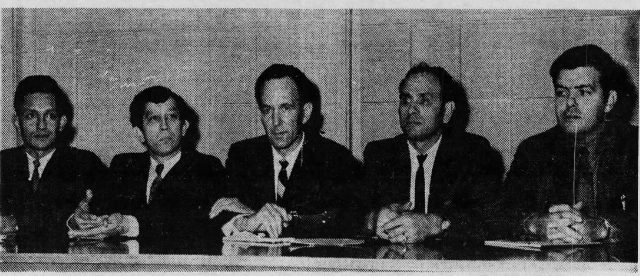
1970 – City police charges a father of five in connection with an incident in front of a downtown York café. The Progressive Spanish American Council’s Jose Hernandez stated that police mishandled the situation, and Catalina Santiago was not afforded his constitutional rights in the incident. Santiago, a board member of the Progressive Spanish American group, was fined $50 and ordered to pay $9 in costs for “loafing, lounging and loitering.” A newspaper showed a lock of hair that police allegedly pulled from Santiago’s head. Hernandez said despite assurances from the district attorney’s office, Santiago was not given a card in Spanish about his constitutional rights nor advised of his right to an attorney.
1971 – The Latino community loses an influential leader when Jose Hernandez died of a stroke at the age of 38. At the time of his death, he was a member of the York County Advisory Council of the Pennsylvania Human Relations Commission, past president and former member of the Progressive Spanish American Council of York County and a member of Bible Baptist Church, York, in which he served as deacon, treasurer and Sunday School teacher. The latter membership indicates that Latinos were represented in both Protestant and Catholic congregations – churches serving as important places in the lives of Latinos, then and now.
1974 – A group of York County residents, mostly Latinos, form a temporary committee in March to explore problems and solutions and to unite the Latino community. The committee, known as the Spanish Council of York, came from a meeting at Catholic Social Services attended by representatives from the Spanish community, the York County Board of Assistance, Community Progress Council, York YWCA, Community Health Center, and representatives of the Catholic and Pentecostal churches. The temporary committee: The Rev. Benjamin Soto, Father Jose Bibiloni, Ramon Rivera, Robert Alicea, Delma Rivera and Luis de Jesus were named committee members. Ruth Amoros, Gloria Hernandez, Teresa del Rio, James N. Snavely, Lil Morgan, Stuart Pullen, Mark Lincoln, Dr. Andrew Hickey, Gussey Petron, Musatta Carrozza were appointed as advisers.
In December, the Spanish Council of York elected a slate of officers – these leaders invested in giving identity to the Spanish community as an integral part of the larger York community. Also, they are tasked with making the local Latino community aware of its rights and obligations as residents of the city and to conduct a community planning process to study and resolve community needs and to act as a mediator between the Spanish and American cultures in order to preserve the dignity of both. Those elected: Nathaniel De Baca, president; Mrs. Ruth Amoros, vice president; Teresa del Rio, secretary; Roberto Alicea, treasurer; Delma Rivera, assistant secretary; the Rev. Jose Bibiloni, assistant treasurer. Other board members: Lourdes Rubio; Leticia Perez, Eulogio Gonzales, Ramon Rivera, Luis de Jesus, Teddy Lopez and Hector Vera Ponce.
1974 – Within a month of the Latino committee’s founding, a column about Latino affairs begins appearing in The York Dispatch. The initial story on April 24, for example, told about a meeting with Mayor John Krout, who offered to talk with a larger Latino group about the city. It also told of a store operated by Jose Torres at College and George streets in York that specialized in Spanish and American food. It also recounted activities at a recent Spanish Council meeting that included eight Latino nominees for positions on the Human Relations and Safer Streets Committees. The committee met with Muriel Bessemer for help in developing a Community Progress Council program to benefit Latinos. And members of the council planned to visit a Latino Center operating in Harrisburg.
1974 – The Spanish Council is among a coalition that advocates for a Spanish-speaking education and counseling center in Red Lion. The Council also joined a group protesting York Health Corporation’s proposed closing of a medical center in Red Lion. The proposed counseling would operate in a storefront, staffed by Spanish-speaking people and linked to Community Progress Council’s alcoholism program to provide technical assistance and training. A coalition that included the Spanish Council, York County Board of Assistance, Catholic Charities and the county Adult Probation Office brought the matter before the Community Progress Council. This moment indicates an early agenda item for the Spanish Council, and the Council’s ability to work in coalitions. It also shows that the Latino population is growing outside of York city, with Red Lion a candidate for an office because of its proximity to migrant workers in the Red Lion area and southeastern York County. Further, the concern for alcohol abuse education was viewed at both the youth and adult level, and language was seen as a barrier in providing education and training.
1975 – Newspapers regularly list days and times for TV shows about York County’s Latino community on York Community Access Television. As one example, the show listed for the evening of Nov. 5 was titled “Hispanic Community – with Nat deBaca. Sponsored by the York Spanish Council.”
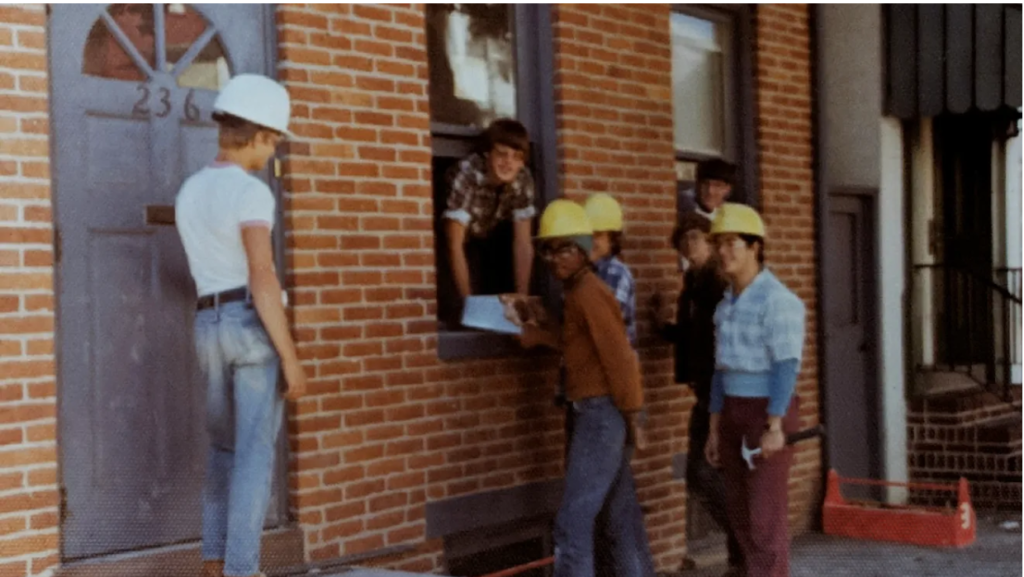
1975 – Nayda Pophal is named director of the new Spanish Center of York, established to create a link between the Spanish-speaking people of York and the rest of the community. The Council acted as an advisory group for Pophal and the center, then located in Community Progress Council quarters on the third floor of the Rupp Building on Continental Square. The center served as a gathering place of Spanish-speaking people and a place for referrals to services in the community. The center also offered Spanish lessons to people in the community.
1976 – The Spanish Council receives approval from the York Redevelopment Authority for a Spanish-American Center at 236 S. Queen Street in York. Representing the Council: Delma Rivera, Gloria Hernandez and Roberto Alicea. Two weeks later, the Spanish Council planned a meeting in the Spanish language at the Kiwanis Lake bandstand. The relationship between the council and the new Spanish Center is on the agenda, an item to be covered by Roberto Alicea, council vice president. The agenda also included: Council president Teresa A. del Rio covering goals and objectives and council programs; Edwin and Delma Rivera, co-chairs of the fundraising committee, providing a report; and Edwin Rivera chairing the meeting. In a newspaper interview a month later, leaders in York’s Latino community reflected on far-ranging topics: The establishment of a Spanish-American Center in Community Progress Council’s building, now on East College Avenue, was making a difference in service to a growing Latino community. The size of that community was placed at 2,500 to 3,000 in the York area with 85% living in the city. The leaders looked forward to a standalone center later in the year, in space being remodeled on South Queen Street. A clergyman working in the Latino community, Jose Bibiloni, urged parents to keep the Spanish language in homes to preserve the culture but teach children to speak English in public. Center Executive Director Nayda Pophal estimated that 20% of the Spanish population speaks English. Delma Rivera – with her husband, Edwin, center fundraisers – said:
“Things are different now from 16 years ago. We are more accepted by the community.” The formation of the Spanish Council two years before had made a difference. The story began in regard to York County’s Latino people: “For the most part they are uneducated and poor. They come to this country seeking a better life. What they encounter here is a cold climate, a foreign language, strange customs, run-down apartments in city slums and no jobs. … But they agree that despite these problems life is improving for the Spanish population in the York area.”
The profile of York County Latinos was increasing on the state level. In 1978, Delma Rivera was appointed to the Governor’s Council on the Hispanic Community, today’s
March 1977 – The Spanish-American Center opens at 236 S. Queen St., its first free standing headquarters. It remains a delegate agency of the Community Progress Council, where it was formerly housed. Nayda Pophal served as executive director of the center, and the center will provide resources in employment, counseling, transportation and referrals.
May 1978 – The Spanish American Center becomes a member agency of the United Way, showing that it meets a priority community need and 20 other United Way requirements. This partnership with United Way meant a steady income stream for the center. The Center’s case included this assessment: 4,500 Spanish-speaking people in York County are not conversant with the English language nor familiar with culture in this part of the United States.
1979 – In a newspaper interview, Spanish American Center Director Jose Del Toro tells about plans to move the center to a new site, the former Emerson Building and Supply at 200 E. Princess Street. The Spanish-speaking population in York is estimated at 5,000 people or about 10 percent of the city’s population. Most Latinos come from Puerto Rico and, thus, are U.S. residents. Some people criticize these residents from Puerto Rico for coming to York to get onto welfare rolls. If that were a goal, he said, they could have stayed in Puerto Rico, entitled to such benefits as American citizens. The language barrier remains frustrating and alienating for job-seeking Spanish-speaking York residents, he said, because they lack the necessary vocabulary and writing skills.
1984 – Jose Santiago is a York County community leader who graduated from York High in 1984. In a 2021 interview, he talked about life in the Latino community in these years:
“I grew up on Liberty Court directly behind the Community Progress Council, which is in the old Noell elementary school on East College Avenue. I attended there for a couple of years until its closing. We were in the neighborhood between Pine and Queen streets. I remember everyone looking out for each other, the neighborhood policing itself and all the parents and kids playing and hanging out together. I remember if there was anything that happened on the block, everyone looked out for each others’ families and kids. It was truly a family environment where if you were at anyone’s house on the block and did something wrong, you were chastised by the parents in that family and then again by your own parents when you returned home. It was more like a village where everyone took responsibility for what happened in the neighborhood to keep us safe. The Latinos in York knew each other, and when events happened, everyone including young children were part of events. Whether it was a birthday party for an adult or Sweet 15 party, it was all inclusive. Block parties with neighbors happened almost every weekend at someone’s house. Even during the winter months, celebrations for holidays were huge. Gift exchanges among households happened every Christmas. We had a sense of belonging in our neighborhood.”
Santiago volunteered at the YMCA’s New American Welcome Center in 2017 and became the center’s director in 2018. In 2021, he served as the YMCA’s director of community development, and in 2024, he headed Downtown York’s center at West Philadelphia and North Newberry streets.
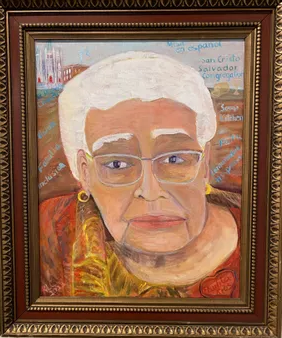
1985 – The top employers and social service groups organize to address the employment picture for York County’s growing Latino population. Ruth Amoros Rodriguez, a social worker in York for 18 years, and Edwin Hernandez, a recent York College graduate, served as at-large members. Hernandez also volunteered at the Spanish American Center. Five years later, Hernandez and Rodriguez were still working on behalf of the center. A newspaper photo shows Hernandez, a York police officer, presenting a $1,000 check on behalf of the Fraternal Order of Police to the center. Rodriguez was included in the picture, representing the center.
1988 – Israel Ramos, a troubled 19-year-old, drapes a pillowcase over the head of his 15-year-old girlfriend and acts out a hostage scene from a city apartment window. Ramos, armed with a toy machine gun, keeps police at bay for three hours until a police sharpshooter targets him, believing the gun was real. Ramos later dies. York’s Latino community decries the shooting — an outrage that cools over time. An internal police probe, state police investigation and coroner’s inquest clear police in the shooting. The case ends when a jury in U.S. Middle District Court finds that the police sharpshooter did not violate Ramos’ constitutional rights.
1988 – Immigrants have arrived in York County in waves and trickles since its earliest years. Latinos make up the largest group settling here since World War II, when scores were recruited to relieve wartime labor shortages. Puerto Ricans, in particular, start settling in the county in the post-World War II era. In the late 1980s, at least half of York’s Latinos live in a 20-square-block area of York’s south end. About 80 percent of the county’s Latinos are Puerto Rican, 10 percent are Mexican and the rest come from other Latin American countries, according to a Hispanic Coalition survey. The survey shows that York’s Latino people are generally younger, poorer and less educated than the rest of the population. The Puerto Rican arrival is different from those who came to the county in the past. Since Puerto Rico is a U.S. territory and its residents U.S. citizens, they come and go to the mainland at will. The 2020 U.S. Census places the Latino population in York County at 39,360 or 8.6 percent of the population, the largest non-white group.
1989 – The York Daily Record’s multi-part series, “Inside Hispanic York,” explores the Latino community in interviews with 150 residents. This is the first time a York County-based member of the news media undertook such an in-depth exploration of the Latino community. The newspaper found that the language barrier creates problems with health care, employment and education. “Other problems – drug abuse, crime, poor housing – are common to all American races and places, but hits this group especially hard,” the newspaper reported. At the time, York’s largest Latino neighborhood lived in and around South Queen Street. At least three organizations worked with the county’s growing Latino community of 7,000: Spanish Community Association, from the First Spanish United Methodist Church; the Spanish-American Center and the Hispanic Coalition, a collective of agencies that served the Latino community. The Association and Center were often at odds. The community was mostly Puerto Ricans, but others made up Latino numbers – an estimated 800 to 1,000 farm and orchard workers including many from Mexico, for example. A prominent member from Cuba, Orestes Almeida, was self-employed and lived in Spring Garden Township. He was president of the parish council for Cristo Salvador Spanish Catholic Church and vice-president of the Spanish American Center’s advisory board. He was Republican and an ardent anti-communist. (Most Latinos were Democrat, but Republicans under GOP Committee Chair John Thompson were intently recruiting). Norman Diez, grew up in Costa Rica, and served as a youth counselor at the Spanish American Center. Only three Latino health professionals – Dr. Edwin Rivera, family physician; Juan Gelpi, child psychologist; and a psychiatrist at York Hospital – worked in York. Their illnesses, especially among the migrant workers, are diseases of poverty – malnutrition, for example. Dr. Rivera said intestinal disorders, high blood pressure, complicated pregnancies and bad teeth are common problems, stemming from poor diets and sanitation. Three Latinos served as city police officers: Allen Fuentes, hired in 1979; Ed Concepcion, 1980; and Edwin Hernandez, 1987. Four main Spanish-language churches worship in York: Cristo Salvador Catholic Spanish Church, First Spanish Assembly of God and Spanish Church of God. “The Hispanic in York is not as progressive or is kind of on the sleepy side, not wanting change,” the Spanish-American Center’s Vilma Garcia-Jones said. “In New York, in California, in Texas, Hispanics are moving and doing and pushing the system to include them and just participating more.”
1989 – By this time, Latinos were gaining key elected and appointed offices in York County. Vilma Garcia-Jones became the first Latino school board member in 1989. She served as director of the Spanish American Center for many years. Abe Amoros took a seat as the first Latino city councilman in 1991. He later served as director of the Pennsylvania State Democratic Committee. Carlos Lopez was appointed city schools superintendent in 2001, and Jeannette Torres later served as school board president. In the new century, Latinos were increasingly recognized for contributions in the community. Delma Rivera-Lytle, Lizaida Morales and Sully Pinos, for example, received the YWCA’s prestigious Dorrie Leader Award. Rivera-Lytle is the daughter of a former Leader Award recipient, Delma Rivera.
1995 – Because of a shortage of priests, the Catholic diocese ended St. Mary’s Church as a German national parish and formed a newly organized St. Mary’s. Part of that structure brought the Cristo Salvador congregation into the new multi-lingual parish. Father Lawrence Hemler became pastor of this new parish, and Deacon Catalino Gonzalez, from Cristo Salvador, became pastoral assistant. Today, a Protestant Latino congregation worships in the former Cristo Salvador church building. In the 21st century, Latino congregations moved into buildings available because of mergers or closures of previous congregations. Potter’s House, for example, moved into the time-worn former Trinity United Methodist Church building at 241 East King Street in York. The congregation shored up the building and worships there today.
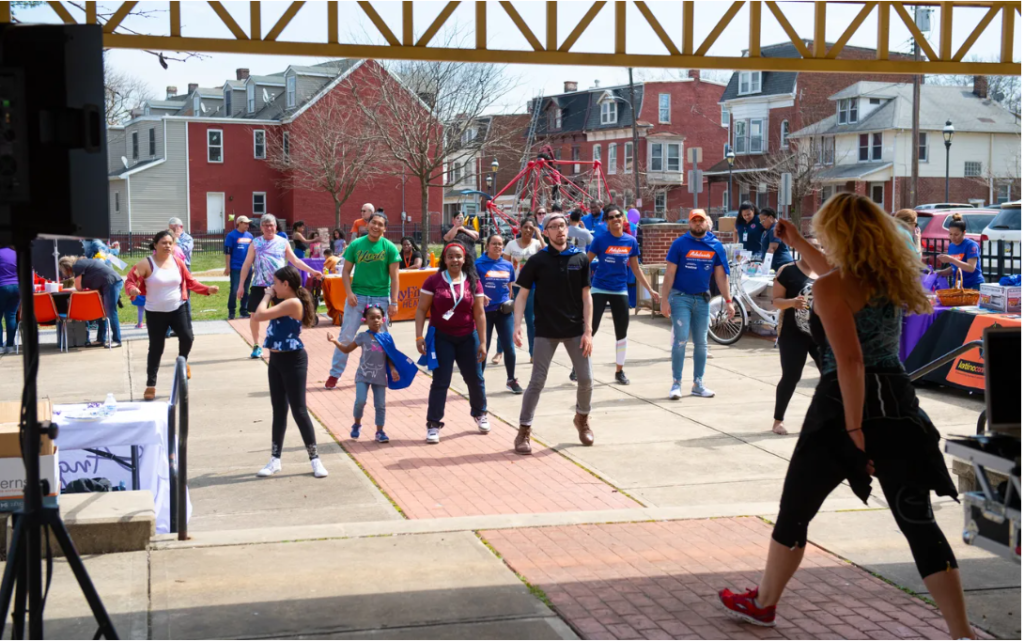
2007 – A four-part YDR series about the Latino community “Hispanic Immigration: The Children,” tells about a population known as second-generation Latino. This group has diverse homeland, brought here when they were young. Or born on U.S. Soil. The series found that they are growing up between two countries, two languages and two culture. Often American born, they hold set of cultural values different from their native-born peers and parents from a different homeland. “Some find pride in their ethnic origins. Others can’t become American fast enough,” the newspaper states. “Some rise to the top of the socio-economic ladder. Others lag behind.” Here’s an example about young Hanover Latino woman: “She is Mexican, yet American. She switches easily between Spanish and English. She eats tortillas and pizza, chiles and sushi. In her apartment, Diego Rivera prints and bottles of tequila blend in with modern décor and a 42-inche plasma TV.” Some findings from the series: Latino popular grew by near 36% from 2000 to 2005 and from 1990 to 2005, it grew more than 220%. Latino were employed in more white-collar jobs as well as moving from season work to factory work. They increasingly were moving from the city to suburban areas and more generally into permanent housing. Latino were coming from other parts of the United States, and Dominicans and Mexicans were among the fastest growing. The series also found about 1% of Latinos in the state were receiving public assistance and less than 1% in York, Adams, and Franklin counties. Many undocumented workers use the emergency room when needing a doctor. “ They’re newcomers,” a doctor who oversaw a Hanover Hospital survey said. “And they are more worried about money than health.”
2008 – The Spanish American Center moves to a new home at 225 E. Princess Street, the former home and office of York Mayor John L. Snyder, York’s mayor in the 1960s who presided over a racially insensitive York city government. The center became known as the Central Hispano Jose Hernandez of York. In 2019, that block – the 200 block of East Princess Street – was dedicated to Edwin and Delma Rivera. The city’s Renaissance Park in that block offers Latinos and other people of all ages recreational opportunities. CASA in York, an organization that advocates for Latinos and others in Pennsylvania, Maryland and Virginia since 2016, is based in the former Spanish American Center. In 2023, CASA occupied another address, a welcome center and space for education and workforce development, in the former Howe’s Dairy building on Roosevelt Avenue.
2018 – The non-profit Latinos Unidos forms after the York Spanish Center merged with CASA. This York County organization seeks to build trust and serve as a liaison for Latino interests in the community as well as enhance the image of Latino groups in the York area. The group’s goal is to inspire Latinos to develop their talents and increase Latino representation in leadership positions in the community. Its membership includes second – and third-generation members of early Latino families in York County. In 2024, Jose Santiago, chair, Delma Rivera-Lytle, vice-chair, Jose Colon-Bones, treasurer; and Angie Garrison, secretary, serve on its leadership board.
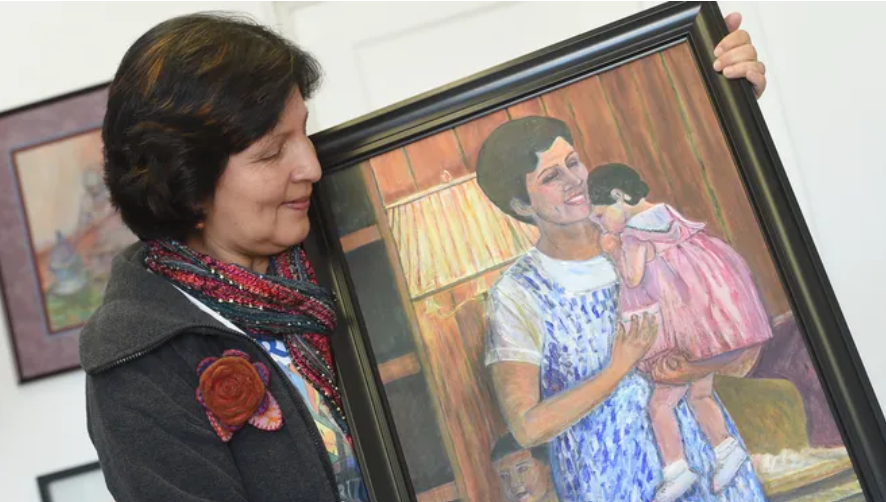
2019 – Urban planner David Rusk delivers an assessment of York County over the past 50 years. He found York has become a majority-minority city in the decade ending 2017, with Blacks and Latinos constituting 55% of the city’s population. African Americans were no longer the county’s largest minority. The Latino community grew from 1,117 people in 1970 to 30,425, a 30-fold increase. In 1970, the county’s Black population stood at 7,231. In 2017, the total Black population was 23,061. Together with the Asian population, the county’s minority population stood around 13.75% in 2017. In the past 50 years, the city’s population loss would have been “catastrophic” had it not been for the increase in Latinos. In 2017, while York County is trending toward more racially and ethnically integrated communities, York City continued to stand apart, especially when considering relative income and poverty levels. Rusk pointed to 2017 York County poverty numbers that showed Black and Latino rates at about 3.5 and 5.5 times higher than whites, respectively.
2021 – York Police Commissioner Michael Muldrow recognizes four generations of Latino officers in the city police department. He thanked four officers from different generations for their service: “(T)he Rookie ‘Gio McBride,’ the Young Lion ‘Alex Nova,’ the Incomparable Detective 1st Class ‘Andy Baez,’ and the Legendary ‘Eddie Hernandez.’ ” Hernandez is the son of pioneering Latinos Jose and Gloria Hernandez. This generational depth developing on the police force reflects the deepening roots and growth of the Latino community in York County.
2023 – Delma Rivera-Lytle stepped to the microphone at the site of the future Crispus Attucks History and Culture Center on Crispus Attucks South Duke Street campus. She talked about Latinos in York County, a community whose story will be told with the city and county’s Black history in the new Crispus Attucks York center, whose groundbreaking took place just minutes later. Rivera-Lytle, vice president of Latinos Unidos reflected on the summer breaks in college when she taught swimming lessons to Black and Latino youths at the Crispus Attucks pool. And the fact that Latino leaders today benefited from Crispus Attucks York’s youth programs years ago. And when Crispus Attucks hosted the Spanish American Center in its early days a half-century ago. When her parents Edwin and Delma Rivera worked toward a Spanish American Center, they understood the importance of the two communities working together. “Representing the Latino Community of York,” she told the large audience before her at the future Crispus Attucks center site, “we recognize the collaboration and connection of the Black and brown communities in York. … It is fitting that the new CA History and Culture Center will be incorporating our Latino history as well.”
The questions
This list is the most comprehensive timeline for York County’s Latino history. However, that doesn’t mean it’s complete. What other noteworthy events in Latino history should be added?
Related links and sources: This Witnessing York page serves as bibliography of Latino history. Growing apples: It’s more than ‘plant the seed, harvest the fruit,’ Urban farming: Thriving agriculture in the city, YDR files, York Dispatch files. Top photos: James McClure. All other photos, courtesy of York Daily Record, except Rosa Luz Catterall’s photo of Paulita Rios.
— By JAMIE NOERPEL and JIM McCLURE

